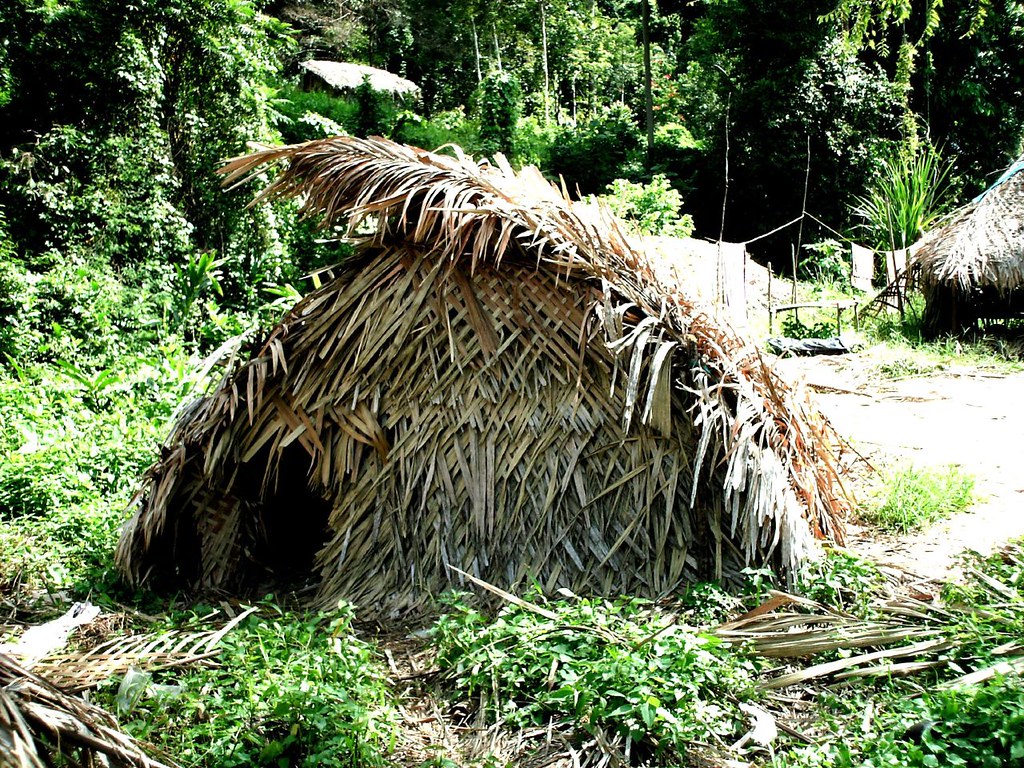
World's Indigenous People: Learning From Their Wisdom
Share
Culturally unique Indigenous communities are known for their incredible connection with the environment. Their heartbreaking history of colonization and displacement is a widely known topic. While we have a glimpse into the resilience of Indigenous peoples, our understanding of their contributions to the world extends beyond surface knowledge.
August 9th has been dedicated to the World's Indigenous People since 1994, internationally.
Why is this day so special? We have much to learn from the indigenous way of life, which is under constant threat. We may not reach our target as long as their culture is in jeopardy.
They first need support.

What Makes Indigenous Communities Unique?
Indigenous Diversity
Although indigenous communities account for only 6% of the global population, they are incredibly rich in diversity, with a variety of distinct cultures, practices, identities, and languages. Despite some of them even sharing geographical proximity, these communities have developed distinct ways of life, reflecting their deep connection to the land and its resources. This diversity is a testament to the human spirit's resilience and adaptability.
According to the UN, approximately 467 million Indigenous peoples live in different parts of the world.
In fact, more than half of the languages known in the world belong to them. Unfortunately, their languages are in danger of extinction. These communities, rooted in ancient knowledge systems, have demonstrated remarkable resilience in preserving their cultural heritage amidst globalization and oppression. They have a knowledge system transmitted over generations and show a solid commitment to their roots. The determination to maintain their identity is genuinely inspiring.
On the other hand, they should not be left alone in their long-running struggle. Their rights need to be protected not only for their well-being but also for the well-being of our Earth. It's a shared responsibility that we all must uphold.
Nature-intertwined Practices
Indigenous peoples are the early residents of the land; they have lived, utilized, and protected it for generations. They share a mutual ancestral ties to the environment and natural resources where they live, reflecting this bond in their practices. Moreover, they have observed, experienced, and spent centuries peacefully in the natural environment. Their home, food, livelihood, belief system, and everything else are connected to nature.

Sustainability is meeting the needs of the present without compromising the ability of future generations to meet their own needs.
United Nations Brundtland Commission
How they have been living is precisely the definition of sustainability. For this reason, indigenous lands are the wealthiest places on our Earth in terms of biodiversity.
Indigenous People's Challenges
Indigenous peoples suffer from several difficulties. The root of all the problems they experience is simple. They are not being recognized. This and the problems it brings threaten the fundamental human rights of indigenous peoples.
Marginalization
Different Indigenous communities have faced centuries of colonization, exploitation, and assimilation. Consequently, they became sub-groups in their lands over the centuries, which resulted in their discrimination. These systemic injustices have led to marginalization, with Indigenous peoples experiencing disproportionate rates of poverty, limited access to education, healthcare, proper employment opportunities, and the right to self-determination. Yet their incorporation into our world can have a negative effect on their way of living.
Globalisation & Westernisation
Due to globalization, the world has become more interconnected, often at the expense of cultural diversity and marginalized communities. The aspects of Western culture that reached Indigenous people can have a heavily negative impact on their traditional lifestyles and environmental stewardship. The imposition of Western consumerism and industrial models has disrupted Indigenous economies, degraded lands, and undermined cultural identity.
For example, there is a scientific evidence and debate on the impacts of Indigenous life transition. Changes in their diet increase the prevalence of indigenous chronic illnesses. This and other relevant issues need to be addressed within the framework of their rights.
Living in Extreme Poverty
Isn't it so sad that Indigenous people, who make up a small percentage when spread over the general population, constitute 15% of the extreme poverty in the world? Historically marginalized and oppressed, these communities have faced systemic exclusion, leading to widespread poverty. Furthermore, they have significantly lower life expectancy (up to 20 years) than the non-indigenous population, which is another expected result.

Vulnerability to Climate Change
Climate change impacts everyone, but communities such as Indigenous people are more disadvantaged. Indigenous peoples have always beautified and protected the environment because of their dependency on nature and the relationships they have established. They have lived in harmony with nature for centuries. Although they are the most minor contributors to human-induced climate change, they are becoming one of the most affected ones.
Marginalization and extreme poverty hinder Indigenous peoples' ability to prepare and adapt to change more significantly than other groups. Climate change also exacerbates their existing problems and worsens the situation. Additional problems occur, including health and safety consequences and food insecurity.
Indigenous Land Use
Their lands are the world's greatest undamaged forestry areas, making them the richest places due to their preservation. Although Indigenous communities have only a tiny proportion of the world's population, their lands manage to host 80% of the Earth's biodiversity.
Between 2001 and 2021, the carbon absorption of the Amazon forests in the parts managed by indigenous peoples, were equal to the annual CO2 emissions of the United Kingdom.
World Resource Institute's report
While indigenous-owned lands were the carbon sinks of our Earth, non-indigenous-owned lands were the carbon source.

Forests may serve the Earth differently depending on the way they are managed. The critical difference lies in the care they receive. In the end, we get what we offer to nature, right?
"We give time for the earth to rest. We live off the forest and so we look after it, taking only what we need."
Shaman Evelio Yucuna, World Economic Forum
Indigenous peoples can be the key to reaching sustainable development goals, specifically goals related to environmental protection and combating climate change.
Indigenous Communities and Sustainable Development Goals
One of the key points of discussion regarding combating climate change is the loss of biodiversity and the destruction of nature. Rainforests, in particular the Amazon, are vanishing at an alarming rate. Every day, vast amounts of these vital ecosystems are cleared for agriculture, logging, and development. This rapid deforestation not only destroys irreplaceable biodiversity but also accelerates climate change. However, this trend does not happen in the parts managed by indigenous peoples. They do not betray their lands but instead protect them.
"Trees are treated like humans and are the source of life.”
Shaman Evelio Yucuna, World Economic Forum
Without indigenous practices and knowledge, achieving sustainable development goals is difficult. The UN 2030 Sustainable Development Agenda drew attention to the importance of indigenous peoples in achieving the goals and sought their expertise in transforming our world. Their rights and life conditions are also among the targets specifically. Considering these communities' contributions to a better world and planet, improving their conditions and supporting them is crucial.

They had the opportunity to make their voices heard by participating in the United Nations Sustainable Development Forums many times. In those forums, Indigenous peoples came together and shared their problems. Furthermore, they also discussed world problems and how to participate in solving them with their knowledge system.
Their active participation in climate conferences and activism is meaningful in combating climate change. We should urgently acquire their way of life and respect for nature. Governments, international organizations, and scientists should all learn about indigenous systems and find a way to implement their knowledge and nature-based practices.
All of us have a lot to learn from them!
Learning from Indigenous Peoples
Scientists have already explored and started utilizing indigenous knowledge since it possesses practical value in fighting our world issues.
Indigenous communities employ amazingly rewarding approaches. If you are interested in reading more, here are some of the solutions awarded by the UN Development Program. They personally showed me the possibility of coping with existing environmental issues and increased my hope for a better future. While we might think that the problems are too complex to be solved easily, sometimes the simplest solutions are the most efficient ones, especially taking into consideration that not all communities have equal resources. Hence, Indigenous wisdom offers a powerful path forward in addressing these complex challenges.
And yes, a lot of research has been done in the name of climate change and sustainability. But have you ever considered where this science and research comes from? Is Western, Educated, Industrial, Rich, and Democratic (WEIRD) research genuinely applicable to the entire world? It seems not enough for the targets from "zero hunger" to climate action and others. We live in a fantastically diverse world that brings colour and beauty to everyone. Utilizing this diversity in research could also enrich science and its implications.
It is time to use and integrate non-Western knowledge and transfer it to practice!
Taking Action?
So, learning more and standing up for their rights is significant. This is not just for their benefit but for the benefit of everyone and the planet. Do not think individuals cannot support them with their limited resources. Through several volunteer opportunities, you can participate in different projects and engage with indigenous cultures and communities. These initiatives uplift Indigenous communities, preserve cultural heritage, and share invaluable knowledge with the world. You can reach countless people by being their voice in their quest for rights.

Article by Merve Kuloglu. I love nature and its vibrant colours. My goal is to understand and embrace all life, present and future, beyond just humanity. I integrate sustainability with my background in psychology to foster a more harmonious world.




